Before they were changing oil, repairing sheetmetal, or building hotrods, many automotive enthusiasts got an early start on their journey by playing with, racing, and wrenching on pedal cars. As such, they’ve become a popular gift to help encourage kids into a rewarding hobby or—better still—a lucrative career.
And we’re guessing that’s why you’re here.
For an aspiring gearhead, a pedal car makes a great gift, but one trip through the pedal cars section of SummitRacing.com will reveal plenty of options—and it might be beneficial if we explored some of the choices you’ll have to make in selecting the best pedal car for the youngster on your gift list.
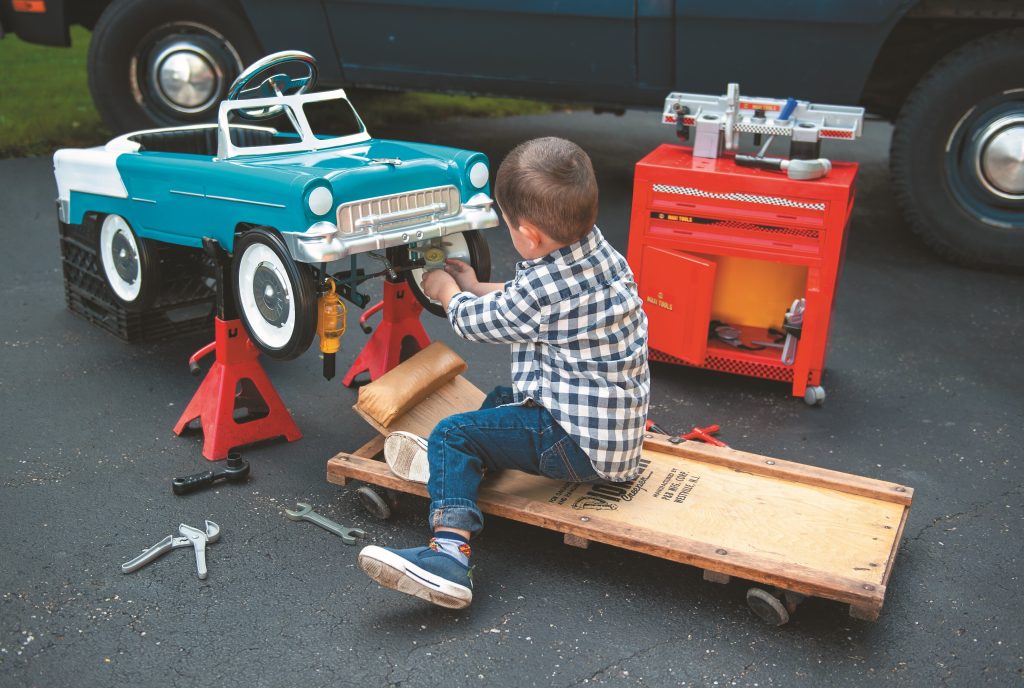
Pedal Car vs. Ride-On Scooter
Before you start shopping for a pedal car, it’s important to get some terminology straight first. While the name “pedal car” is pretty straightforward, don’t be surprised to hear the terms scooter and ride-on used too—often interchangeably.
As the name implies, a pedal car has pedals and, as such, operates much like a bicycle (save for the steering).
Typically a ride-on car will not have pedals, relying solely on the child’s feet to “scoot” it across the ground, hence the name “scooter.” The absence of pedals is a key distinction here, and it often means that a scooter or ride-on will be designed for younger children.
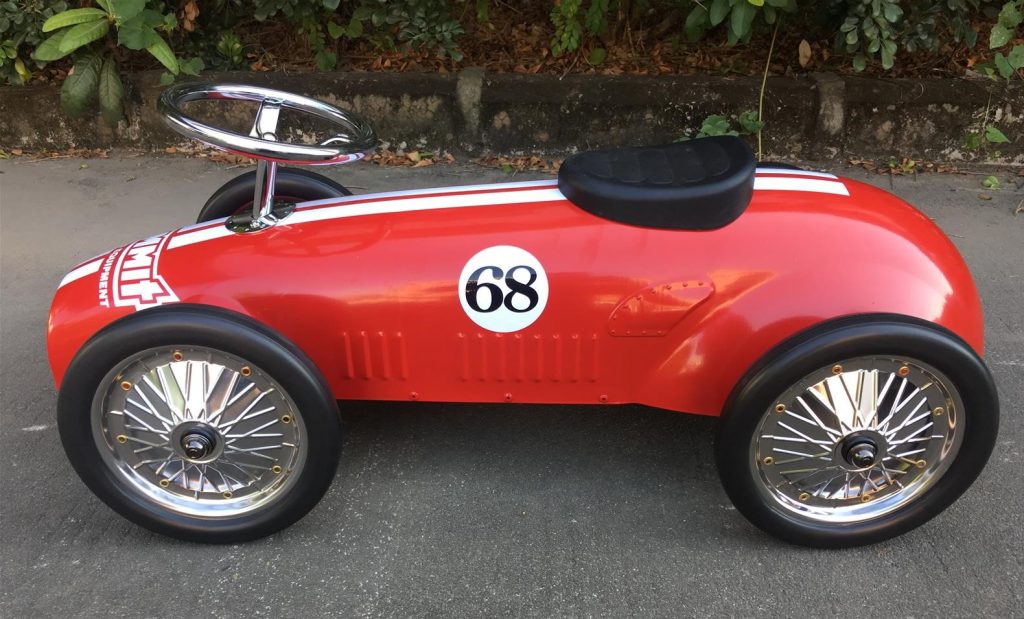
What’s the Recommended Age for a Pedal Car Rider?
Remembering the scooter vs. pedal car distinction noted above, there are some different age tiers to explore. First and foremost, it’s important to note that we’re speaking in broad terms here and each specific pedal car will have its own recommended age guidelines, so please check with the pedal car’s manufacturer specs before making a purchase.
Generally speaking, a ride-on car will be good for younger children (around two years old) and serve as a stepping stone to a car with real pedals. Typically, a ride-on scooter will feature a steering rack that’s reminiscent of a full size car, allowing kids to learn the basics of steering before throwing pedals into the mix.
Once the child’s legs are long enough (and strong enough), then moving up to a pedal car is an easy transition—often when they’re around three years old.
With the steering fundamentals down, the last piece of the puzzle is braking. Many of the pedal cars you’ll come across feature “coaster brakes” which engage when the pedals are pushed backwards in the opposite direction. Coaster brakes will let the rider lock the rear wheels, allowing the pedal car to quickly come to safe stop.
While coaster brakes are easy and intuitive, more advanced pedal cars (particularly racing or off-road models intended for older kids) may also feature a hand brake for the rear wheels, akin to a typical car’s parking brake. The hand brake allows for more control over the vehicle’s speed and handling across a mix of terrain.
One other note, for children just starting out with a pedal car, you’ll want to let them learn on a level surface, free of slopes and large cracks/gaps in the concrete that can impede movement or affect the car’s speed.
But there’s very little learning curve for successfully operating a pedal car—so don’t be surprised if your kid is zooming around your driveway in a matter of minutes.
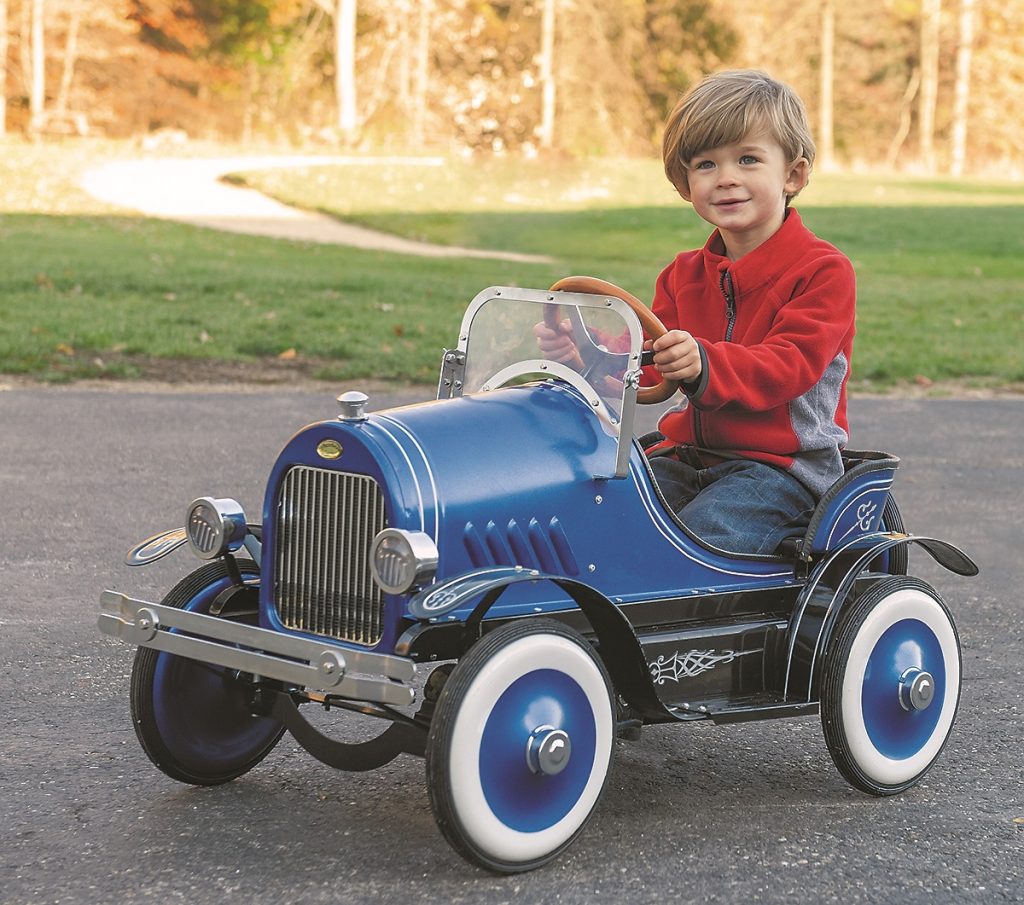
Are there Any Size or Weight Restrictions on a Pedal Car?
While age is a critical guideline for choosing the best pedal car, don’t overlook the importance of the child’s size and weight. You may not find a specific size or weight restriction per se, but a good pedal car manufacturer will give you, at the very least, the car’s overall dimensions so you can get an idea of how big (or small) it will be.
More importantly, some pedal cars offer adjustable seating and pedal positions, some do not. Checking for adjustability can increase the car’s versatility for families with multiple children.
And remember to consider the car’s overall weight. A quality pedal car will be made from steel and other rugged components, and though that significantly improves the car’s durability, it can make the car heavy and tougher to pedal for kids with shorter legs.
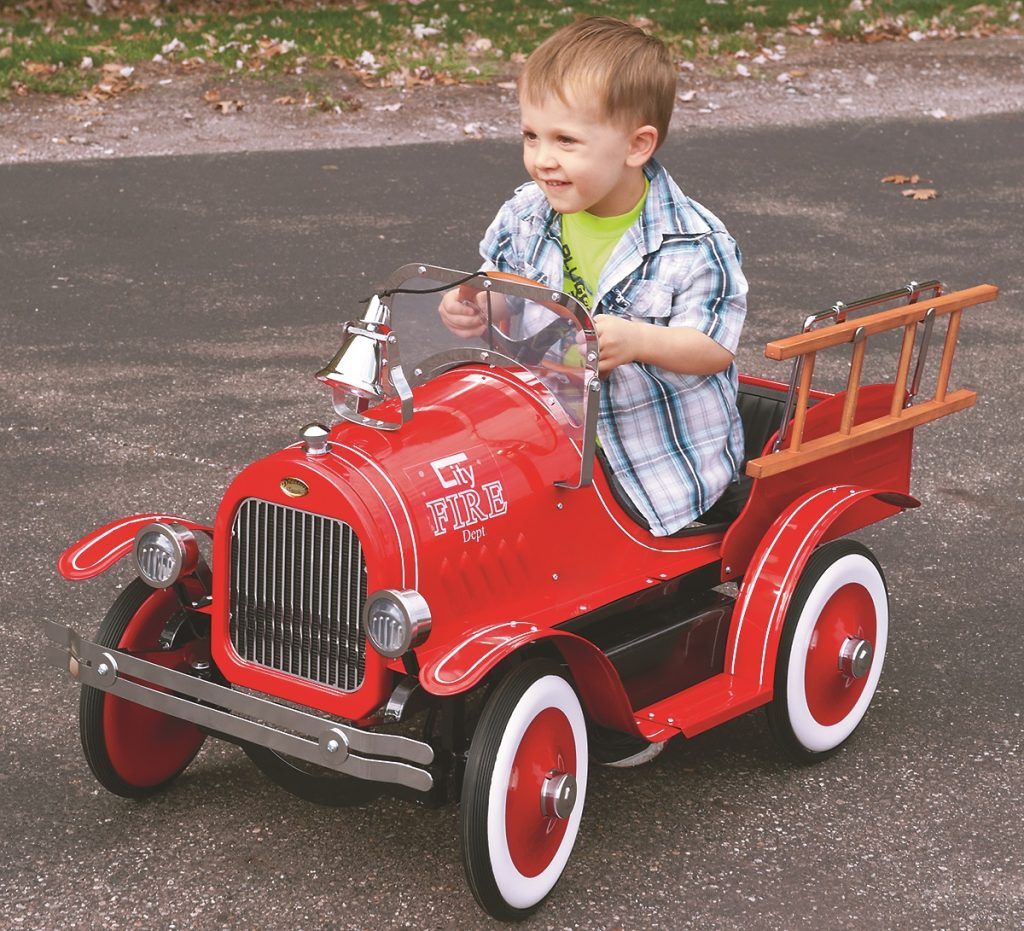
Where Can a Pedal Car be Ridden?
Where your kid can take their pedal car depends on a few factors. The first being the car design itself.
Many of the nostalgic, steel-bodied pedal cars are better suited to hard surfaces like a driveway or basement floor. Yet, there are also pedal car designs tailor-made for dirt, grass, and hills. As you’d imagine, these “off-road” pedal cars may require a bit more strength and dexterity to maneuver around a trail path.
It’s also important to remember that many public spaces may restrict the use of pedal-powered vehicles in, say, a park or recreation area. As a general rule of thumb, if bicycles aren’t permitted in the area, then a pedal car probably won’t be either—search around for signs barring bikes, roller blades, skateboards, etc.
And it almost goes without saying that pedal cars should not be ridden on active public roads.
Pedal Car Assembly & Maintenance
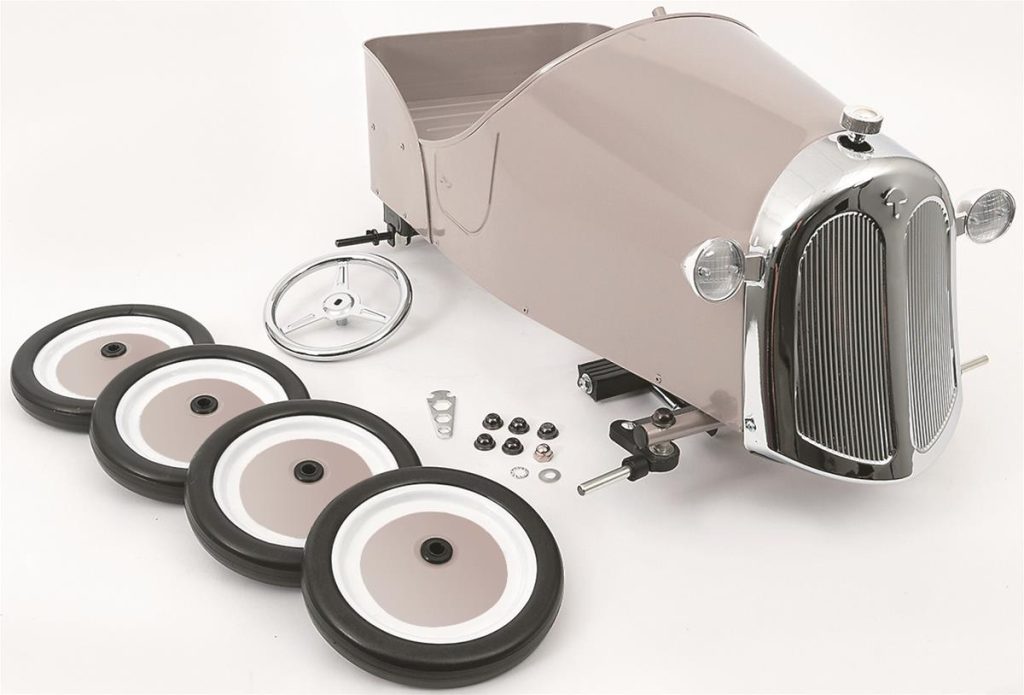
If you’re buying a pedal car online, there’s a good chance you’ll have to put it together yourself. But in our experience, most pedal car manufacturers include detailed assembly instructions and require the use of basic hand tools like screwdrivers and pliers that you probably already have.
Here’s a tip though: You may want to buy a tube of threadlocker to keep the car’s nuts and bolts from rattling loose during rigorous play.
As far as maintenance goes, you’ll want to keep the chain coated with a light application of chain lube. Moving parts can be lubed with some silicone spray that’ll keep moisture out without attracting grit and dust. Also, make sure all steering parts and pivot points are free of binding or rubbing.
For steel-bodied pedal cars, an annual coat of car wax, an interior wipe-down, and some chrome polish will keep the body, interior, and trim looking great.
All told, periodic, seasonal inspection can go a long way towards keeping a pedal car in good condition and ready for generations of fun—which is pretty much the whole point.

Comments